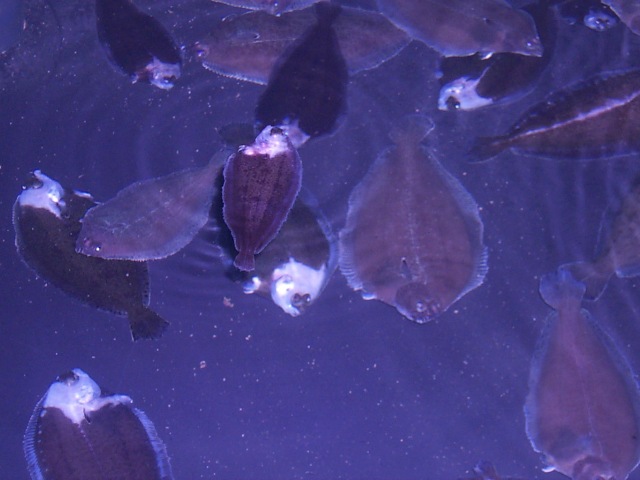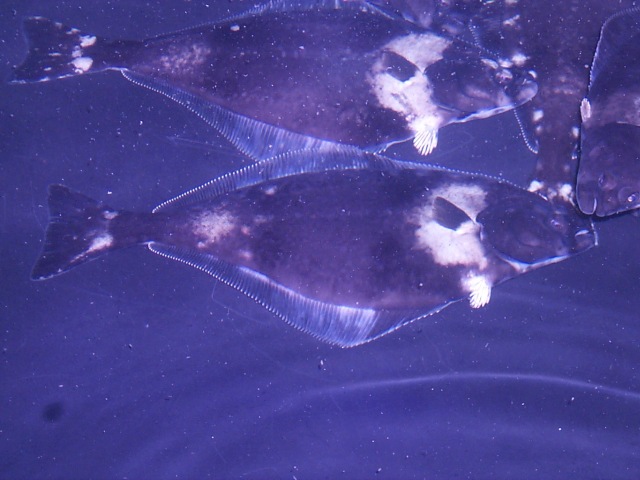Atlantic Halibut

Scientific Name: Hippoglossus hippoglossus
Description: The body is strongly, laterally compressed with the eyes on the right side. The head is about 25% of the body length and has strong teeth in both jaws. The colour is variable with the upperside greenish-brown to dark-brown and the underside white.
Habitat and Distribution: Atlantic Halibut live in cool boreal and sub-arctic waters on both sides of the North Atlantic. They move from shallow waters to deeper waters in the winter.
Diet: These fish are voracious feeders up to a length of 30cm and feed on annelid worms, crustaceans such as crab and shrimp. At 30-80cm they consume invertebrates and other fish. When they reach sizes of over 80cm, they only consume fish.
Growth: They have the fastest growth rates of flatfish, with females growing faster than males and attaining larger sizes. Some large fish have been estimated to be around 30-35 years old.
Reproduction: Spawning takes place in late winter or early spring in much of Canada. They are batch spawners that spawn at 183m or deeper, with large females producing up to 2 million eggs. Eggs hatch at 16 days at 6'C. The larvae stage is pelagic and has a very long yolk sac stage.
Predation: Larval and juvenile Atlantic Halibut are eaten by other fish. Greenland Sharks are also said to prey on halibut.
Relation to man: Atlantic Halibut have a high commercial price. They are caught by otter trawls and longlines. In 1981, 1932 tonnes were caught at a value of $4,759,000. There is currently a lot of work being done on the aquaculture of Halibut.
OSC Images
 |
 |
 |